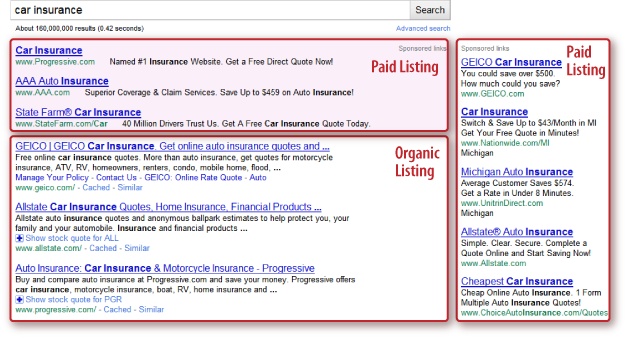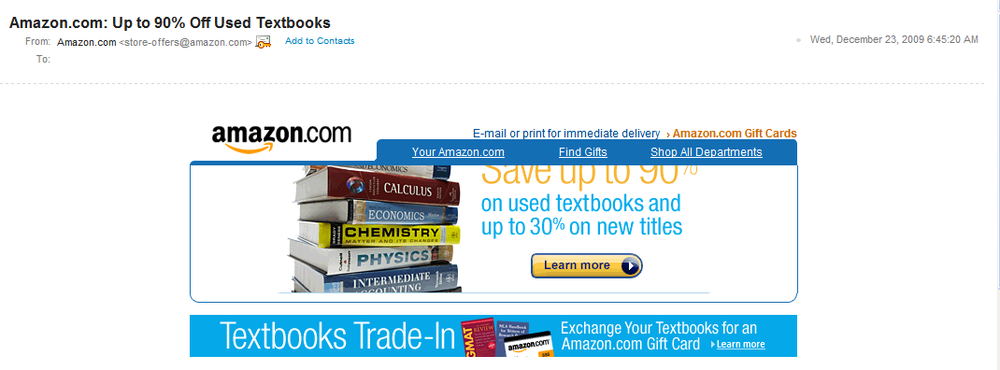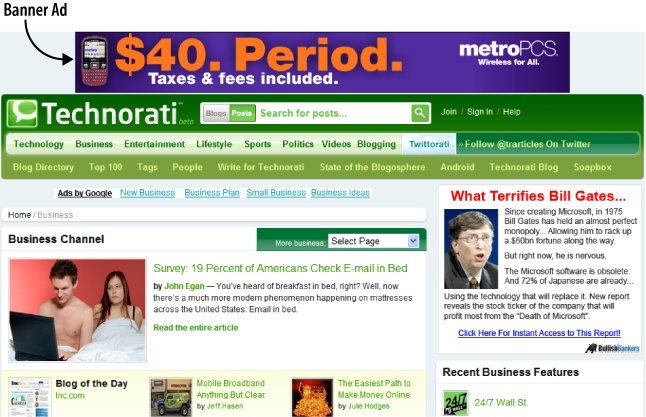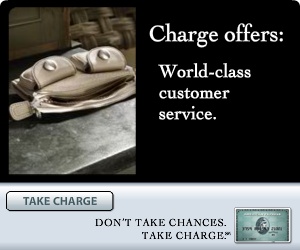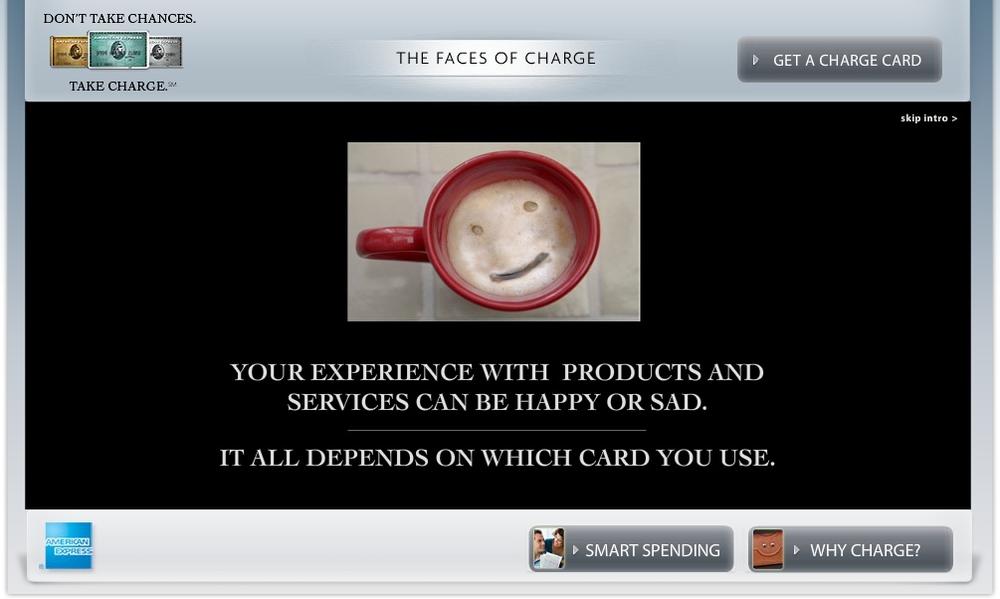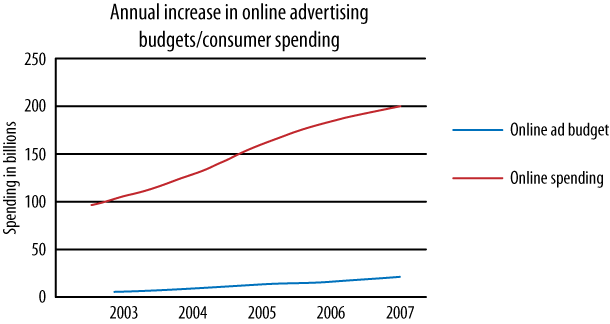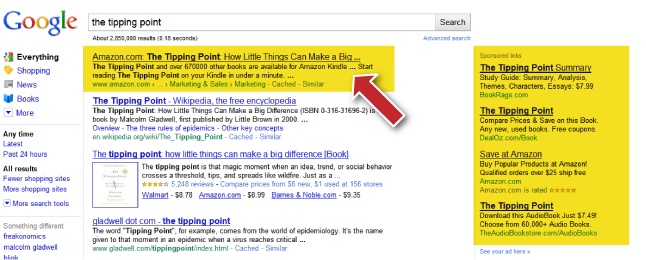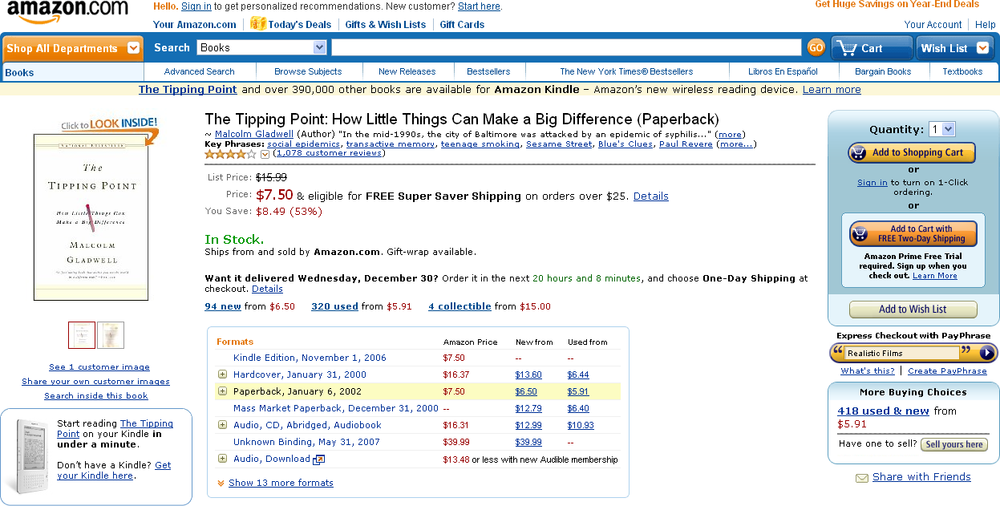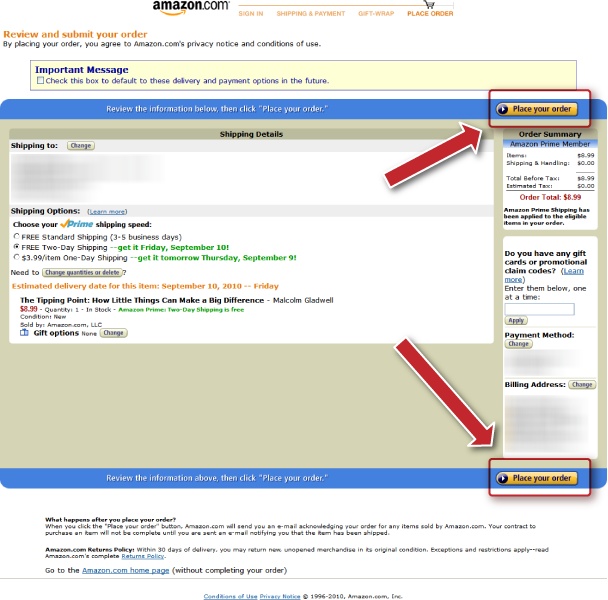Chapter 1. The Journey from Clicks to Sales
SELLING ONLINE IS HARD.
Although customers are just one click away on the Internet, merely reaching them is not enough. Potential customers are bombarded with more than 3,000 advertising messages every day.[1] The competition for their attention is fierce. They are also savvier than they were 20 or 30 years ago. If you want to increase sales, you must connect with your customers in new ways, capture their interest, give them control over their relationship with you, and gently guide them toward a conversion.
Every sales transaction is made up of a buying process and a selling process. In the buying process, the customer realizes his need or desire for a particular product or service, identifies and evaluates the different options available to him, and finally makes a purchase. The selling process is the flip side of this. In this process, the sales executive must establish a rapport with the buyer, qualify the buyer’s needs, demonstrate how her product meets those needs, deal with the buyer’s objections, and ultimately close the sale.
Although the Internet revolutionized how buyers and sellers communicate, the buying and selling processes have not changed much. The Internet gives buyers increased information and makes different products and retailers more accessible. Sellers, of course, have new ways to reach potential buyers.
The different stages of the selling process represent a funnel that many potential buyers or prospects enter on one side, and few actual buyers exit on the other. As potential buyers go through this sales funnel, many will exit at different stages for different reasons. The exit points represent holes in the sales funnel. Optimizing the sales funnel focuses on plugging these holes.
This process of sales optimization is complex. However, we can learn a lot about it from retail chains. No other retailer has perfected the art of maximizing revenue per visit as much as Wal-Mart has. Initially, they relied heavily on keeping prices lower than the competition and achieving profitability through higher sales volumes. Although this strategy remains at the heart of Wal-Mart’s marketing approach, its marketing mix has evolved tremendously over the past 20 years. The retail giant pays very close attention to every little detail of its sales process. Before a single visitor sets foot into a Wal-Mart store, plans are laid out and executed carefully to select the right location for the store, as well as its layout, merchandising displays, atmosphere, consistency in branding, and store traffic flow.
As a result, Wal-Mart continues to be one of the world’s largest and most successful retail companies. Regardless of whether you like Wal-Mart, the company’s planning, attention to detail, and successful execution provide critical lessons. As Wal-Mart has proven, choreographing every step and element of the sales process translates into more revenue. You must get into the minds of your customers. You must optimize your selling process to meet the needs of your customers. Ultimately, you must guide your customers through the sales funnel toward a conversion.
Converting Visitors to Buyers
The Web’s interactivity makes conversion fast. You can convert a prospective customer into a paying customer more quickly on the Web than in other media. People receive various messages through advertising and promotional media attempting to persuade them to take action. Although traditional offline media can broadcast those messages, it’s hard for people to act on them immediately. On the Web, a prospect could receive a message and, in mere minutes click on a link and buy a product.
Although this is wonderful, converting a prospect online is not that easy. The speed at which the conversion can occur is matched only by the speed at which the conversion will unravel, creating new kinds of challenges. Online prospects can become distracted and within seconds decide to navigate to another website, never to return to yours. So, how can you minimize the chance of your prospect leaving your site, and maximize the results of your online promotion?
Conversion optimization analyzes the behavior of consumers, focuses on what motivates a particular market segment to react in a certain way to marketing elements, and advises companies on how to adjust their marketing and sales mix in response. As the name suggests, conversion optimization is focused on increasing the percentage of visitors that “convert” into buyers for a marketing campaign. Conversion optimization is a departure from traditional marketing, where it is sometimes difficult to measure and quantify the impact of a particular campaign. Quantitative measurements provide a foundation. Although you should define a conversion based on your own specifics, you must be able to track the number of conversions during a certain period.
The process of conversion optimization starts with quantifying the numbers for each campaign you run. Different campaigns will track different kinds of conversions. For a retailer, these numbers might be the number of orders the retailer receives in one month or the average order value during the same period. For a law office, it might be the number of website inquiries or the number of new cases signed up. An online news website or magazine might track the number of subscriptions or how often stories are viewed. A nonprofit organization might track the donations collected in one week or one month.
After establishing an initial baseline, the next stage is to understand the story behind the numbers. Why did your target market react a certain way to a specific campaign? What did they love or hate about it? What could you have done better? Again, the customer is at the heart of this analysis. We will dig deeper into consumer behavior throughout the book and give you more specific examples to help you understand your customers’ behavior.
Armed with the knowledge from the analysis stage, you are finally ready to move to the optimization process. Because conversion optimization is focused on results, we rarely recommend making drastic changes where you lose track of which elements are impacting your audience. This can be one of the biggest challenges in conversion optimization. Many website operators and marketers are deeply frustrated by their low conversion numbers and are eager to find new ways to maximize revenue. As a result, they change hundreds of elements in a single campaign, hoping that these changes will have a positive impact on their bottom line.
We have done conversion optimization long enough to know that although some of the changes will have a positive impact, a few of them will have a negative impact. Many are likely to have little to no impact at all. Making too many changes at once dilutes the impact of such changes, making it difficult to track which elements actually helped—or hurt—your campaign.
Conversion optimization is an iterative process. You start by understanding your market and making assumptions about how your market interacts with your website. You then adjust your marketing and sales processes to test these assumptions and to measure how your market actually responds. Exactly measuring a customer’s response on the Web is far superior to measuring a customer’s response in any other medium—learn all you can from the response. Changes to a marketing campaign that increase revenue are rewarding. But instances where adjustments cause a decrease in revenue present valuable information about your market. Changes to a website or campaign that do not move the needle in any direction should be cause for concern.
Conversion optimization starts when a visitor views a particular ad and clicks to visit your website. A properly designed campaign, site, collection of web pages, and checkout process will give your prospects the information they are looking for and will increase your chances of converting them. However, a poorly developed website can undermine an otherwise successful promotional campaign.
Landing Pages
We are used to entering terms into a search engine and receiving results that are relevant to our query. If your website or campaign is displayed on the search engine results pages (SERPs), you have a chance of a consumer clicking on that listing and landing on your website.
Figure 1-1 shows how a SERP is divided into two main sections: organic results and paid results. The organic search results are your first chance to get visitors to your website. Organic search results appear in the order that search engines determine is most relevant to a particular query after crawling millions of pages on the Web. The competition for the coveted first place in organic search results is fierce. The discipline of search engine optimization (SEO) focuses on achieving a higher ranking in the SERPs. Paid results on a search results page are your second chance to get a customer to click through to your website. Although paid advertising is competitive, it is far less complex to appear first as a paid listing compared to the organic listings. In the paid listing section, advertisers pay only when a customer actually clicks on an ad.
Search is only one way to drive customers to your website. Many companies send regular promotions and advertisements to their email lists. Figure 1-2 shows an example of a promotional email we received from Amazon.com offering large discounts on textbooks. The goal of this particular email is to get us to take action: visit the site and place an order.
Banner advertising is another technique you can employ to drive visitors to your website. Although most paid search results rely on a model in which advertisers pay when a user actually clicks on the ad and lands on your website, most banner advertising is sold based on the number of times a banner is displayed. Figure 1-3 shows how metroPCS uses a banner ad to drive visitors to its website.
The techniques for driving traffic to a website are similar to the techniques for driving customers to a retail outlet. Think of the advertising that media retailers use to convince customers to visit their store: yellow page listings, TV commercials, print advertising, radio ads, telemarketing campaigns, snail mail ads, and many other forms. Table 1-1 compares some of the online and offline advertising media. Ultimately, the goal is to convince a potential customer to come to the store and make contact with the retailer.
|
Offline |
Online |
|
Yellow pages |
Directories |
|
Billboards |
Banner ads |
|
Direct mail |
Email campaigns |
|
TV/radio advertising |
Online ads |
|
Print advertising |
Content ads |
|
Conferences |
Webinars and virtual conferences |
|
Telemarketing |
NA |
Regardless of the medium, the goal of most advertising is to drive customer demand. When you click on any of the different types of online advertisements or organic search results, you will be directed to a landing page. A landing page is the first page a visitor sees after clicking on or entering a specific link or web address. Figure 1-4 shows a banner ad for American Express. When you click on the banner ad, you will arrive at the landing page displayed in Figure 1-5.
In the offline world, as customers see your different ads, they might at some point get in their car and drive to your store. The entrance point and the first thing customers see when they walk into a physical store mirror the online landing page. That physical “landing page” is the first chance for a brick-and-mortar retailer to make a positive impression on a customer.
In the overall process of marketing, most of a company’s time and resources are spent on creative, production, media placement, and similar tasks. Often, without the proper attention, a landing page is marginalized, giving the impression that the strength of the overall campaign is all that is needed to attract customers. However, getting a prospect to the landing page does not mean success; it is just the start of the road to success.
Although you might get away with paying little attention to a customer’s entrance point (landing page) in the physical world, data shows that consumers are not very tolerant of poorly designed online landing pages. There is a large difference between how customers react to an online landing page and how they react to a physical store’s equivalent. Our analysis of hundreds of online advertising campaigns shows that more than 50% of online visitors leave landing pages in fewer than five seconds without continuing to the rest of the website.
When was the last time you drove to a retail outlet, stayed in the store for five seconds, and then just walked out? This does not happen often. Yes, the time investment required for a physical store visit might have a lot to do with this. But other factors, which we will discuss later in the book, also prompt customers to leave an online landing page right away.
Fifteen Years of Change
In 1995, when the first ecommerce stores began to appear online, marketers spent a lot of time convincing both large and small companies that they needed an online presence. Many companies thought the rush to the Web was similar to the gold rush: it was unjustified, and it would eventually die down. By the end of 1996, fewer than 50,000 websites were online and fewer than 2.6 million transactions were conducted on ecommerce websites.[2]
In the three years that followed, more companies embraced the Web, though often without focus. Many companies established an online presence because doing so was supposed to increase brand reach and open new revenue streams. As ecommerce was still in its infancy, very few companies could figure out how to actually generate online revenue or create sustainable business models. Having a website became a business goal in and of itself.
During these first few years, companies struggled to determine the technical and marketing complexities of selling online. At the same time, consumers were hesitant to hand over their credit card information to an online business. Security and privacy concerns for a brand-new medium were valid and stopped many customers from considering ecommerce as a viable option. In a 1998 article published in the New York Times, “Security Fears Still Plague Cybershopping,” the reporter points out the following:
While not many of the 19.7 million Americans who visited commercial Web sites from their homes in 1997 have reported problems with Internet credit-card use, some surfers—and security experts—say they are concerned enough about Internet crime that they would rather auction off their firstborn child than use a credit card to buy something on the Web.[3]
We’ve come a long way, haven’t we?
You Must Market Your Site
Back in 1999, at the height of the dot-com era, we worked with a software client who wanted to capture the online customer relationship management (CRM) space. The company was funded by a group of technologists who believed that their $40 million startup would take the Web by storm. They projected that the site could generate more than $100 million in its first year of operation. The company’s entire marketing plan seemed to center on a one-minute flashy spot during the Super Bowl.
Sound familiar? The first day the site was live, it had fewer than 1,000 visitors. Things did not improve. With no real online marketing plan to promote the website, the numbers continued to dwindle. Management learned a very hard lesson: it is not enough to build a website; you must spend the money to bring visitor “traffic” to it. Of course, our client was very similar to numerous other startups during the dot-com bubble. Too many companies assumed a website was a great marketing tool in and of itself. The reality is that for this marketing tool to be successful, you first must market the marketing tool!
Companies were quick to learn from their mistakes. By the late 1990s, companies started spending millions of dollars to advertise and bring traffic to their websites. By 2005, online advertising reached $12 billion. The online channel has been growing steadily since 2003 and is on track to surpass the $61 billion annual level of ad spending for the first time in history by 2010.[4] Online advertising budgets, as displayed in Figure 1-6, are expected to continue to grow by close to 10% annually[5] worldwide to surpass $110 billion by 2015.[6]
For the most part, the purpose of these large investments is to drive as many consumers to a website or a landing page as possible. By the end of 2007, data from our ecommerce customers showed that 50% of online marketing budgets was spent on SEO. In 2008, spending on SEO increased to close to 60%.
Once Visitors Arrive, Convert
Many companies are making huge investments in their effort to drive as many consumers as they can to their websites. Yet, companies are discovering that it is not enough to drive visitors to their websites; it is just as critical, if not more so, to convert these visitors into actual consumers or leads. The concept of conversion is by no means a new idea. Print advertisers have discussed response rate and conversion ratios for years. Most direct mail campaigns convert at 1% or less.[7] Online conversion rates did not do a whole lot better. Data reported by Shop.org reflects a continuous decline in online conversion rates. In June 2007, the Fireclick Index reported an average ecommerce conversion rate of just 2.2%. Fireclick Index data shows an average conversion rate of 1.7% in August 2010.[8]
As a result, most firms are increasing their investment in conversion optimization. From our experience, the majority of Fortune 500 companies are allocating close to 5% of their online marketing budgets to conversion optimization efforts. Based on the current trends, we expect that by 2015 most companies will spend close to 15% of their online marketing budgets on conversion optimization, and the remaining 85% will be spent on other forms of online marketing (SEO, paid advertising, email, banner ads, etc.).
Conversion Rates
Whether you are trying to measure the health of your website, the success of your paid advertising, or the ROI in an online marketing campaign, you’ll often discuss conversion rates. The term conversion rate has many definitions. For the purposes of this book, we define conversion rate as the percentage of visitors exposed to a campaign who take the desired action of that campaign. Since there are different goals and ways to measure conversion, this definition should be general enough to use with different media.
There are hundreds of millions of business websites, most of which fall into one of these categories:
- Ecommerce websites
Mirror their physical store counterparts by offering products to their visitors. A conversion on an ecommerce store happens when a visitor places an order with the site.
- Lead generation websites
Are not designed for consumers to place orders on them, but rather are designed to capture leads. The actual conversion process takes place offline. Many professional services firms such as consulting companies and law firms rely on their website to drive leads for their business. A conversion on a lead generation website takes place when a visitor successfully fills out a contact form and submits it online.
- Content-based websites
Rely on publishing content to drive visitors to the site. Content sites usually sell advertising to generate revenue. A conversion on a content-based website is more difficult to quantify compared to a conversion on an ecommerce or lead generation website. These sites charge their advertisers based on the number of monthly views and visitors to the site. So, having more visitors or more page views will lead to higher advertising revenue. Thus, a conversion might take place when a visitor views more articles, spends more time on the site, visits the site regularly, or even subscribes to a newsletter.
- Brand websites
Are designed to increase brand reach and awareness within a certain market. Although other types of websites can define measurable conversion goals, brand websites have vague notions of what a conversion is.
- Social media websites
Are designed to help different audiences connect and communicate with each other. Examples of these websites include blogs, Facebook, and LinkedIn. Social websites introduce a new challenge in redefining what a conversion is within a social network.
Of course, a website does not always fit into a single mold. Although ecommerce companies sell products to customers, which is their main conversion goal, they still have other website conversion goals, such as increasing brand awareness or getting visitors to subscribe to a mailing list. A content website that relies on online advertising—such as an online magazine—might also sell paid subscriptions to access premium content on the site.
The discussion in the book will focus primarily on ecommerce and lead generation websites, although you can easily apply the same concepts to other kinds of websites.
Calculating Conversion Rates
The primary goal of an ecommerce website is to sell products to consumers. The conversion rate for an ecommerce website in a particular period is the total number of orders the site receives divided by the number of visitors to the site. If a website gets 10,000 visitors in one month, and of those only 120 visitors place an order, the conversion rate for that site is 1.2%:
| Conversion rate = 120 / 10,000 = 1.2% |
Of course, a conversion on an ecommerce website does not happen in one step; it is a multistep process. Let’s say you want to buy a copy of The Tipping Point, so you go online and search for the book in Google. Figure 1-7 shows the many search results for “The Tipping Point.” Data tells us that the first listing among organic results gets the highest number of clicks on a search results page, which is usually around 45%. Figure 1-8 shows “The Tipping Point” product page at Amazon.com, which you would land on if you click on the first search result.
Although product pages on an ecommerce website can have different goals, the main goal is to get visitors to click on the “add to cart” button. Of course, clicking on this button does not translate into a sale. Website visitors have many options after clicking on it. For example, they might get a phone call and forget about purchasing The Tipping Point. They might become distracted and navigate to other products. Or they might want the book enough to actually click on the “checkout” button to start the order. Of course, they still have to go through the different steps of the checkout process, with each step getting them closer to the final goal of placing an order. Only when a visitor clicks on the “Place your order” button in Figure 1-9, the final step in the Amazon.com checkout process, has Amazon.com secured an order and a conversion.
Figures Figure 1-7 through Figure 1-9 show a typical “order funnel” for many ecommerce web-sites. This funnel might start with visitors arriving at different pages (landing pages) in the website. Although an ecommerce website may or may not have full control over where a visitor lands initially on the site, it does have control over the design of the order funnel, such as the checkout process. Each step toward the final order page is a micro conversion. Small victories build toward the final, ultimate victory: a visitor placing an order, or a macro conversion. A macro conversion will only take place if the ecommerce store is able to convert the visitor at each micro conversion.
An online order funnel is very similar to a physical sales funnel. Think of a company that is looking to purchase an expensive piece of software. Evaluating the different software packages is similar to looking at a category page with different products listed in it. Narrowing the options to a particular software package mirrors looking at the product pages in an ecommerce store. Then there is the physical-world “checkout,” finally executing the agreement. The only time you reach a deal is when each step in the process successfully leads to the next step.
Conversion Rate Averages
Online conversion rates have been on the decline since companies started tracking them. Although we used to talk to our clients about average site conversion rates of around 5%, these figures no longer hold true. Most websites struggle to convert visitors into clients, and the numbers aren’t improving. Table 1-2 shows the Fireclick Index average conversion rate based on the industry in June 2007 and June 2008. Most (though not all) categories report a decline in conversion rates.
On the other end of the spectrum, some ecommerce sites report double-digit conversion rates. Table 1-3 shows the top converting ecommerce websites according to Nielsen’s MegaView Online Retail report in June 2007.[9] Next to each top converting website we included the industry averages as reported by the Fireclick Index.[10] Table 1-4 shows the top converting ecommerce websites according to Nielsen’s MegaView Online Retail report in March 2010,[11] as well as the industry averages.[12]
|
Conversion rate |
Industry average | |
|
Lane Bryant Catalog |
24.7% |
2.3% |
|
QVC |
16.7% |
5.8% |
|
Oriental Trading Company |
15.2% |
5.8% |
|
Blair.com |
14.5% |
2.3% |
|
Jessicalondon.com |
13.7% |
2.3% |
|
Symantec |
13.5% |
3.9% |
|
Roamans |
13.5% |
2.3% |
|
The Sportsman’s Guide |
12.2% |
0.4% |
|
Christianbook.com |
11.9% |
5.8% |
|
Lillian Vernon |
11.8% |
1.7% |
|
Type of site |
Conversion rate |
Industry average |
|
Schwan’s |
40.6% |
2.1% |
|
Woman Within |
25.3% |
1.7% |
|
Blair.com |
20.4% |
1.7% |
|
1800petmeds.com |
17.7% |
2.1% |
|
Vitacost.com |
16.4% |
2.1% |
|
QVC |
16.0% |
5.2% |
|
ProFlowers |
15.8% |
2.1% |
|
Office Depot |
15.4% |
5.2% |
|
Oriental Trading Company |
14.9% |
2.1% |
|
Roamans |
14.4% |
1.7% |
Although most online retailers are able to convert 2.3% of their visitors into customers, retailers such as Lane Bryant convert 24% of their visitors into customers. Yes, some online retailers are able to capture 10 times as much business compared to their competitors. Some even sustain that rate over years.
What You Can Accomplish
Conversion optimization can bring a company a staggering increase in revenue. For many companies, conversion rate optimization translates into hundreds of thousands of dollars of additional revenue. For example, a client of ours that runs an ecommerce furniture store had annual sales of around $20 million. The initial three months of conversion optimization generated a 30% increase in online sales, which translated to around $600,000 in additional sales per month. With large numbers such as these, you may be wondering: why wouldn’t every company jump on the conversion optimization bandwagon?
Before we answer that question, let’s compare ecommerce conversion rates to those of the physical world. Although there is no published data on the average physical-store conversion rate, informal surveys show that most offline stores convert around 25% of their in-store traffic into actual purchases. When a store runs a large discount, those conversion rates shoot up even more significantly. Think back to Black Friday 2009. Even in a bad economy, thousands of customers waited in lines for hours in front of retail stores looking for good deals.
So, why are website operators content with low conversion rates? We’ve encountered three common reasons:
- Conversion data is difficult to track
In the case of a standalone ecommerce website where the company does not operate a traditional physical store, calculating conversion is clear. The line is not so clear in the case of a mixed operation, where the company sells both offline and online. Many websites that have a physical-store presence report that offline retail sales increase as a result of their online advertising.
Research by Yahoo! and comScore shows that consumers who were exposed to online advertising are more likely to research products online and then to make their purchases offline.[13] And although more and more people are purchasing online, data shows there is a segment of visitors who are more comfortable completing a purchase offline. In that case, consumers complete the research online, but the actual purchase (conversion) takes place in the physical store.
So, although the reported online conversion rate is low, the overall conversion rate for the company is actually higher. The question of attributing offline sales to online visits presents a challenge that many companies continue to struggle with.
- Acquiring visitors costs money
Acquiring website visitors, whether via organic search results or through paid advertising, used to be cheap. As a result, most ecommerce stores did not worry about their low conversion rates. This is no longer the case. Search engine optimization whereby a website ranks at the top of the natural search results requires more time, effort, and money today. Paid results requiring bids of between $3 and $5 per keyword are typical in most industries. It is not unheard of to pay more than $10 in certain competitive markets. As traffic gets more expensive, more website operators will look for ways to maximize ROI on the current traffic they are getting.
- The world of conversion optimization is mystical
This is perhaps the biggest reason we have not seen a real push toward improving conversion rates in the past few years. Conversion optimization is a blend of science and art. It is the intersection of creative, marketing, and analytical disciplines. It would be easier to state that there is a simple formula you can apply to increase your conversion rate. And yes, there might be a few tweaks you can make here and there to quickly increase your conversion rate a bit. But it takes time and patience to move from a 2% to a 10% conversion rate.
Can You Really Achieve a Double-Digit Conversion Rate?
CEOs and VPs of marketing ask this question every day. Many of them have accepted low conversion rates as a fact of doing business online. They believe that achieving a double-digit conversion rate is farfetched, or even impossible. Some executives have not only accepted low conversion rates, but will argue that there is no way to increase sales conversion rates. Having helped hundreds of companies increase their sales, we know the possibilities are endless. The question is not whether you can achieve a double-digit conversion rate; the question is whether you are willing to do what it takes to achieve a double-digit conversion rate.
Expectations for conversion optimization results should be combined with realistic expectations regarding the amount of work required to achieve these results. Because many clients do not understand the investment and commitment required from their team, they give up too soon. Conversion rates won’t increase overnight. You must start by understanding the visitors you are trying to convert. You then have to create hypotheses about these visitors and why they interact the way they do with your website. Then you have to validate these hypotheses by making changes to your website and tracking the customer response. All of these steps require time, resources, and a financial commitment, which is why they must be done accurately and with great focus.
The Numbers Game
In the physical world, many executives believe sales is a numbers game. The more calls or appointments you book, the more sales you will generate. Let’s assume your sales force is able to convert 10% of their appointments into actual contracts. What would it take to generate more transactions? You shouldn’t discount the fact that making more calls and appointments, if the same averages hold, will translate into more transactions. But most experienced organizations understand the value of trying to convert more of their current pipeline into transactions. Developing new leads and making initial contacts with them is a lot more expensive than focusing on the current pipeline and increasing its output.
The same rules apply to the online world. Sales is both a numbers game and a quality game. You should figure out ways to increase the number of qualified companies or individuals entering your sales pipeline. It is even more important to increase the conversion rate of the current funnel. But which of the two is a better option? In the long run, much as in the physical world, the cost of acquiring new visitors to a website or a campaign is expensive. Converting more of your current funnel into actual paying clients typically costs less.
Conversion optimization puts your customers at the heart of the sales process and yields better results by following three main approaches:
Determine current strong techniques that are working for your organization and enhance them.
Discover weak points in your selling approach and replace them with better tactics that have worked for your particular market.
Continue evaluating the sales funnel and test new elements to increase its conversion rate.
Over the long run, conversion optimization will generate more customers with the same investment in time and money.
[2] http://www.acjournal.org/holdings/vol2/Iss3/articles/Online_Shopping.htm; http://www.docstoc.com/docs/7069364/ANALYZING-E-COMMERCE-GROWTH-FROM-THE-PERSPECTIVES-OF-INNOVATION-DIFFUSION
[5] http://www.comscore.com/Press_Events/Press_Releases/2010/8/comScore_Reports_Q2_2010_U.S._Retail_E-Commerce_Spending_Up_9_Percent_vs._Year_Ago
[9] http://www.internetretailer.com/2007/06/26/lane-bryant-catalog-site-tops-online-retailers-in-conversion-rat
Get Conversion Optimization now with the O’Reilly learning platform.
O’Reilly members experience books, live events, courses curated by job role, and more from O’Reilly and nearly 200 top publishers.
